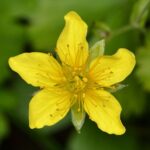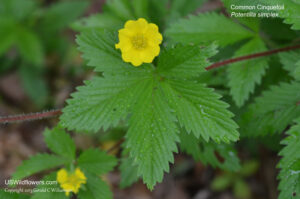
By Sarah Wang, Kim DeAndrade, and Jean Devine
By this point in the summer, your water barrels may be dry and you may be devoting inordinate amounts of time (and money) to watering. No matter how much you water, it cannot compare to real rain. Here are some tips to help with drought:
Mulch!
Besides retaining moisture, mulch will feed the soil and keep down the weeds.
- Avoid dyed mulch. It is unregulated and may contain shredded construction wood waste and pressure-treated wood. And, it won’t do much to feed the soil.
- If you buy mulch, consider compost and leaf mold. These mulches are light enough to allow for ground-nesting bees. Please be aware of the possibility of contamination by the invasive jumping worm. Ask about management techniques at the store; has the mulch been heated to kill the eggs and do they keep bags off the ground to prevent further infestation?
- You can make your own mulch: mulch in place or “chop and drop.” Deadheading and pruning materials can be cut smaller and dropped in place. Grass clippings and pulled weeds also work, but be sure to throw away any flowering potential to avoid any chance of seeding, and throw away all invasives (black swallowwort, for example). This method will feed your soil and save you the work and added expense of hauling garden waste away only to have to haul mulch back.
- The more you let nature be, the healthier the habitat you build. So adopt a front to back “mullet” approach for your garden beds: all business in the front (more neat and manicured where you can see it) and party in the back, where nature can relax a little more.
Plant!
The more you plant, the less mulch you need.
- Substitute mulch with ground covers. They’re more beautiful and also less work once established. Some great easy-care options include Prunella vulgaris (var. lanceolata), wild or barren strawberry, sedges, and pussytoes (Antennaria spp.).
- Allow volunteer groundcovers to spread. Examples are violets, and other volunteers taken for “weeds” such as cinquefoil (Potentilla spp.) and wood sorrel (Oxalis). Learn to identify these useful natives with apps like Picture This, PlantNet, iNaturalist, and Google Lens. Make those “weeds” work for you!
- Plant more densely. Roots help to absorb rain runoff and hold it in the ground. And, unlike the typical garden of plantings isolated in a sea of mulch, native plants benefit from crowding. Without competition in a rich garden soil, they grow too much and flop, unable to support the heights they were never supposed to reach. So feel free to get more plants and indulge your gardening addiction.
Plant for drought
Plant selection is key.
This may be hard to do if we are in the middle of the drought, but study your yard to understand where it is wetter or drier so you can move or choose plants for the right area.
- Add more native grasses, such as little and big bluestem, prairie dropseed, and switchgrass. The roots run deeper so they don’t compete for water with other natives, and the blades buffer wind, smell nice, offer late-season interest, serve as host plants, and feed birds into the winter. Place them close to your flowering plants.
- For more information on drought-tolerant plants, visit the UMass extension, Tufts Pollinator Initiative, or the Wild Seed Project.
Start making plans for the fall
Move those thirsty plants, plant more groundcovers, and buy plants (on sale), and plant them in the right place. Make those “weeds” work for you!
In the meantime, slow down. Summer is a great time to observe plant, bird, and pollinator life, and share your photographed discoveries with others through the Mystic Charles Pollinator Pathway Group (MCPPG) Facebook page and the iNaturalist app. MCCPG has an iNaturalist project page that you can join by searching for MCPPG on the iNaturalist app. Then every time you upload a photo of a plant or pollinator, it will add it to our project automatically. Joining iNaturalist will also help you create your own record of plants and pollinators you see.
For more information about MCPPG and to add your native garden to the MAP, visit our website: www.sustainablebelmont.net/mystic-charles-pollinator-pathways-group
Sarah Wang and Jean Devine are Belmont residents and cofounders, along with Brucie Moulton, of the Mystic Charles Pollinator Pathways Group. Kim DeAndrade is on the MCPPG steering committee and lives in Medford.



Sorry, the comment form is closed at this time.